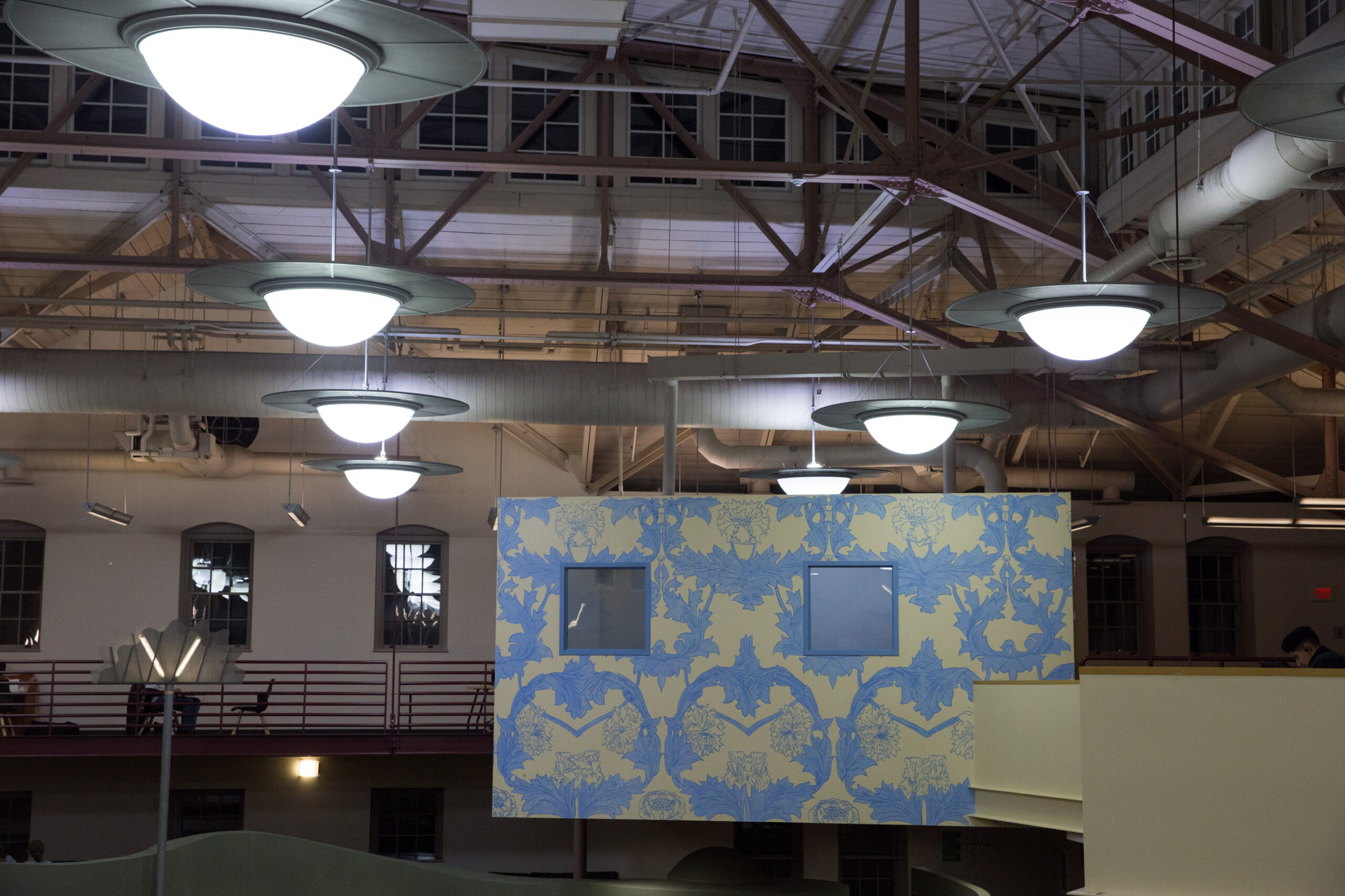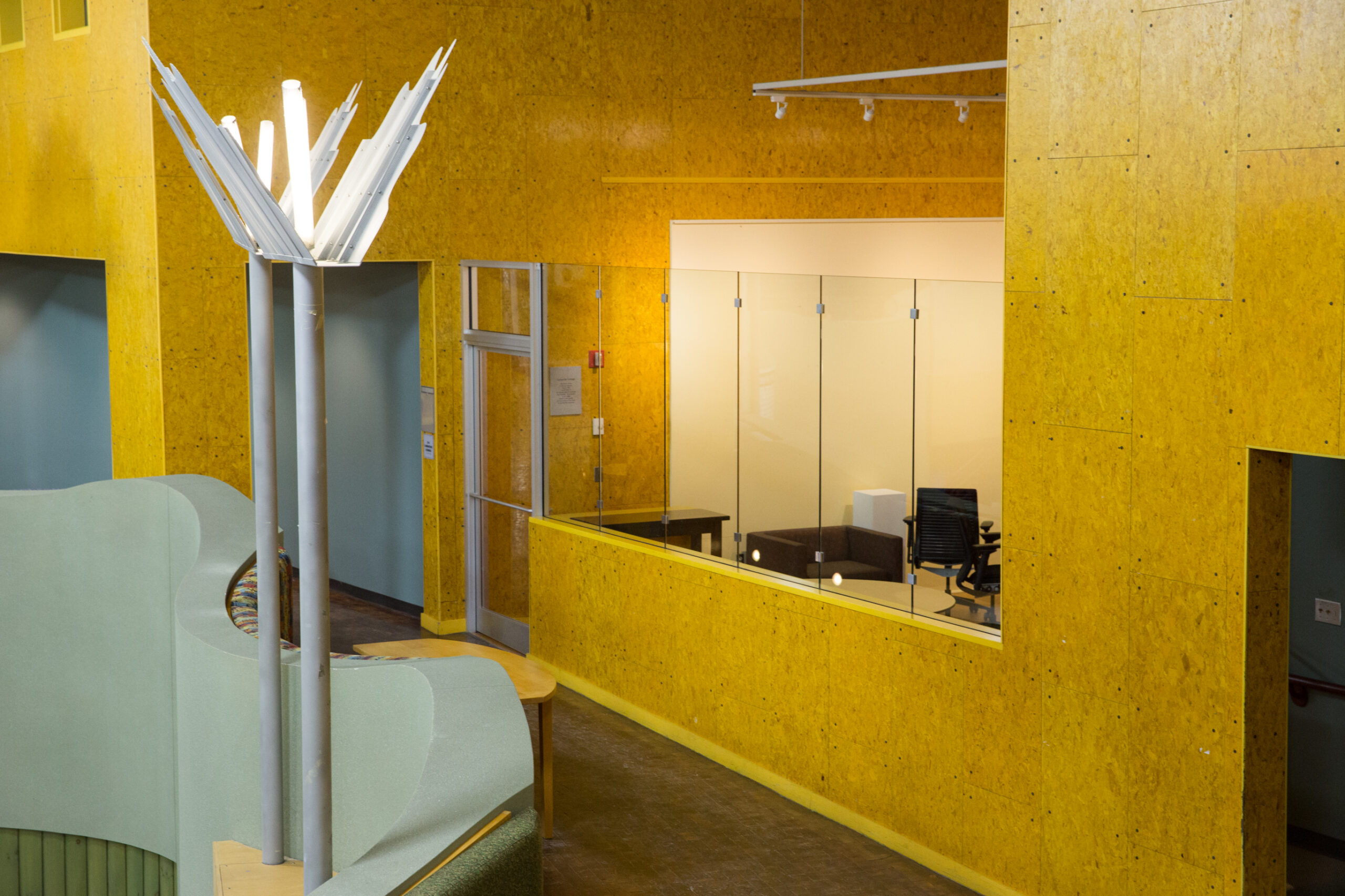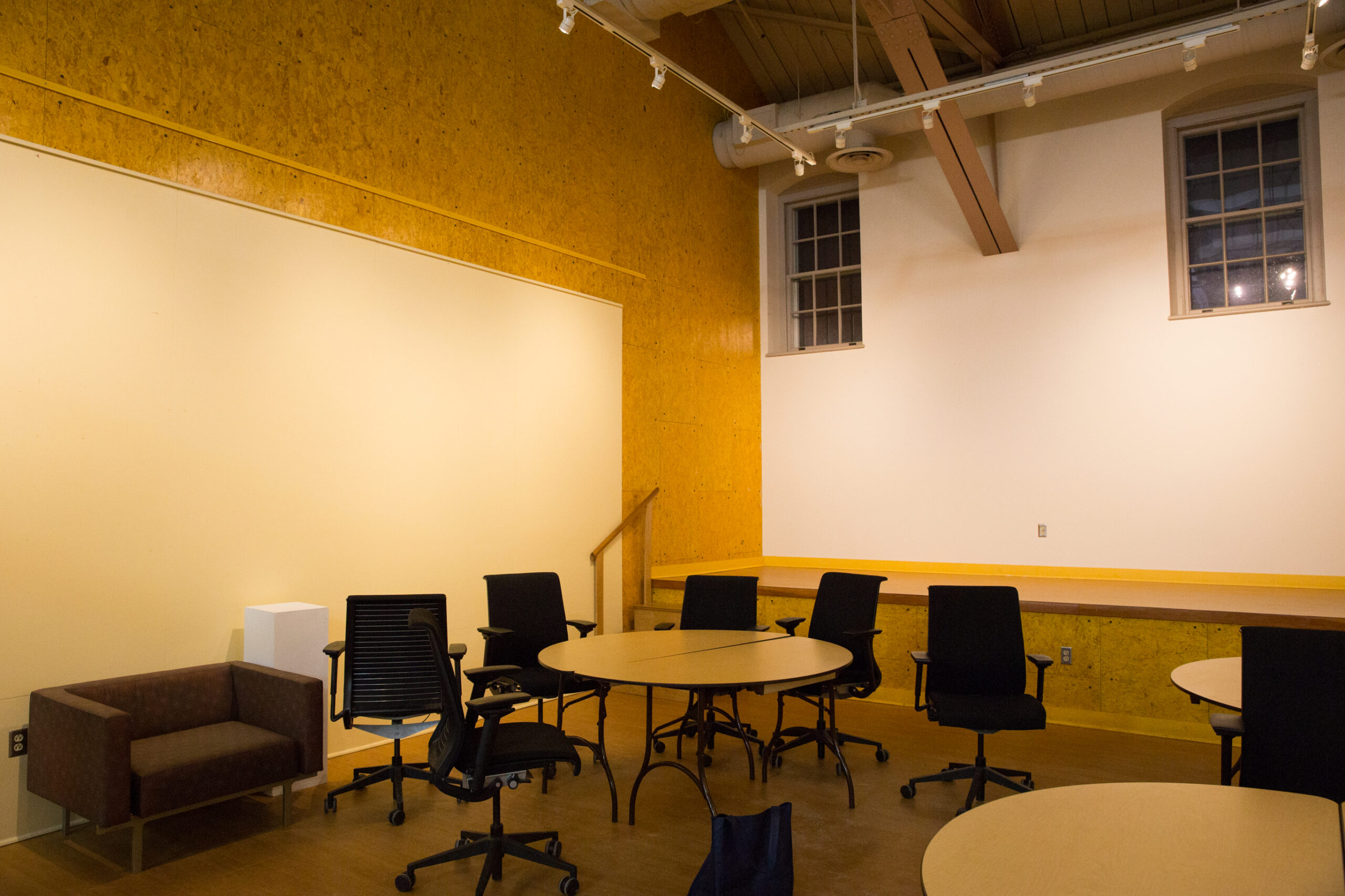Campus galleries highlight student art talent
February 1, 2019
 Ann Basu
Ann BasuWhether it’s trekking up the ramp to get to the Hubbard Stacks, staring into the windows of Lamarche Gallery while working on a problem set or sinking into a couch right in the middle of the Blue Box, Bowdoin students can easily find art in their surroundings. From the Ramp to the Blue Box, Bowdoin’s student-curated galleries occupy unique spaces on campus and in our daily lives.
Home to the College’s Visual Art and Art History departments, the Edwards Center for Art and Dance and Visual Art Center often only display final projects by art students for a brief period. The David Saul Smith Union and Ramp galleries, encourage all students—whether they are in an art class or not—to exhibit their artwork for weeks or months at a time.
“[The student-curated galleries] are opportunities for people to express their creative side as a person at Bowdoin, regardless of what their degree is going to be,” said Blanche Froelich ’19, curator of the Ramp Gallery.
Anyone setting foot on Bowdoin’s campus eventually finds themselves exploring Smith Union or visiting the Hawthorne-Longfellow Library. The public and central locations of the galleries there allow students to showcase their work not only to the Bowdoin community, but also to greater Brunswick area and beyond.
“A lot more people from the neighborhood come into the Union,” said Meghan Parsons ‘19, a curator for the Smith Union galleries. “We definitely think about representing the Bowdoin art scene in such a central space where more people can see it.”
Student contribution is central to these galleries. What makes it special is that a physics major or a government major—studies disciplines not typically associated with the arts—can share their creative expressions.
“It’s rare that someone who does not take an art class ends up having a show here, but I think that’s definitely part of the goal,” said Parsons.
What interests Bowdoin students? What questions are people asking? What concerns do people have with society? The freedom and autonomy of student-curated galleries support students in exploring such questions.
“Even though, as art spaces, there is value in having shows that showcase beautiful work,” said Froelich. “I think that they are also space for discourse [where] you can really try to push for conversation about what’s happening.”
Whether gathering submissions, installing artwork or publicizing, curators are charged with overseeing every aspect of the galleries. It’s hard work, and the curators are rewarded by the outcome, as curation is an art in and of itself.
“[As a curator] I get to make a space on campus more beautiful and in that way I am grateful I get to have this in my life,” said Froelich.
Because of the broad range of opportunities the galleries provide, curators are not always sure what to expect from artists. Actively collaborating with artists to ensure that the final product conveys the artist’s vision and intent is a huge part of their job.
“There’s so many logistical things that I don’t necessarily think about when I go to an art museum—coordinating a lot of people, knowing the artist feels well-represented. Sometimes there’s a mismatch in the communication,” said Parsons.
Although these exhibitions have typically leaned toward more traditional media such as paintings, drawings or sketches, the curators hope that future artists will introduce a different variety of submissions including poetry and videos. The Ramp Gallery, for one, has recently installed a new projection system that will hopefully spark ideas for displaying a diverse range of works.
For the upcoming semester, the Ramp Gallery is currently looking for submissions for the show called Topophilia, a connection to or love for land.
“Why do people care about certain places? What does it mean to be from a place, to have roots in a place? All of these are questions we’re hoping to open up in this show,” said Froelich.



Comments
Before submitting a comment, please review our comment policy. Some key points from the policy: